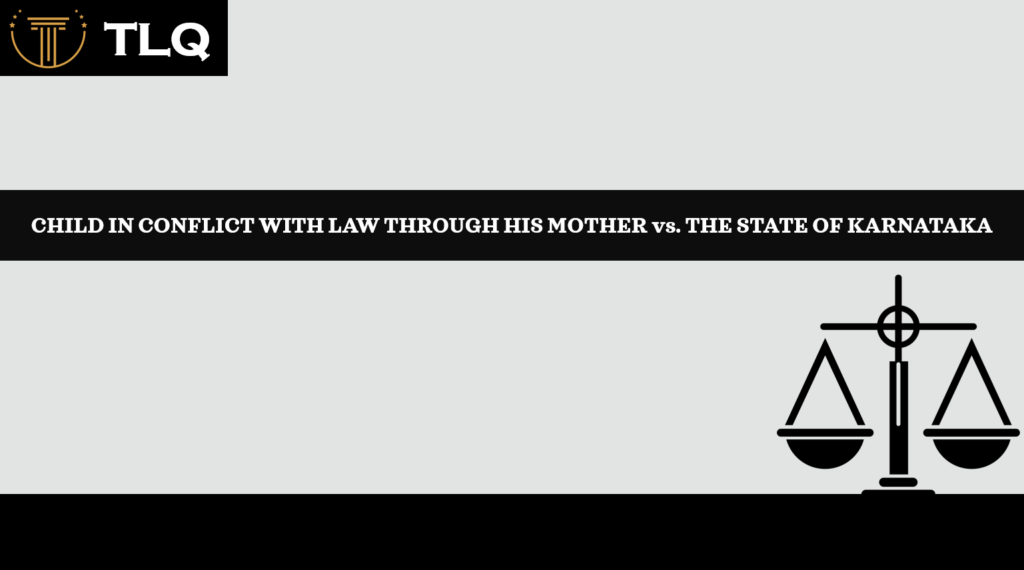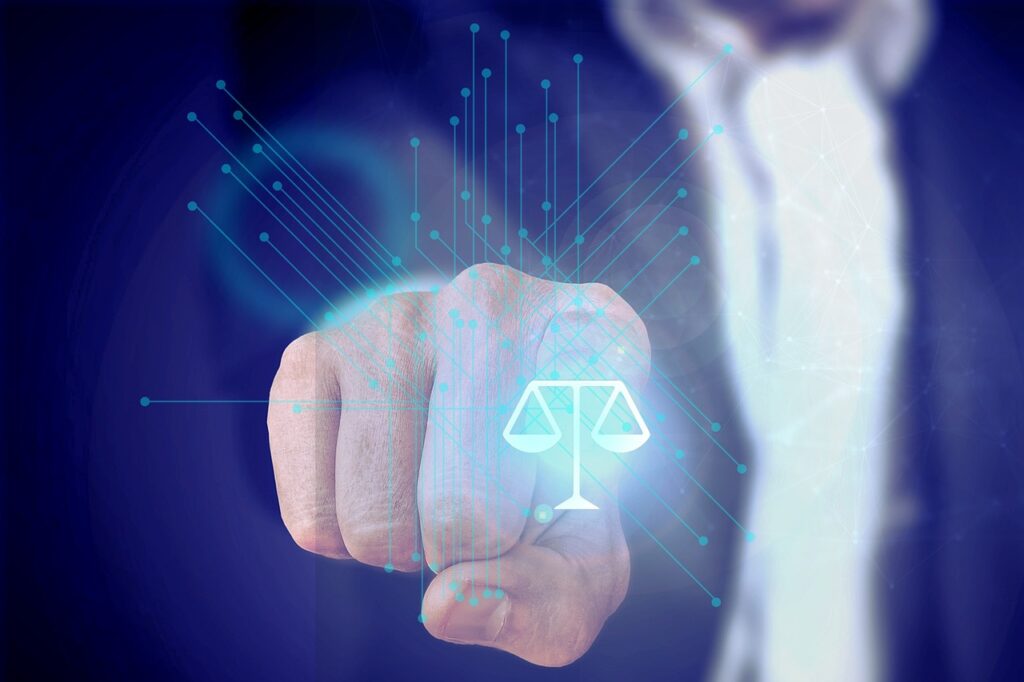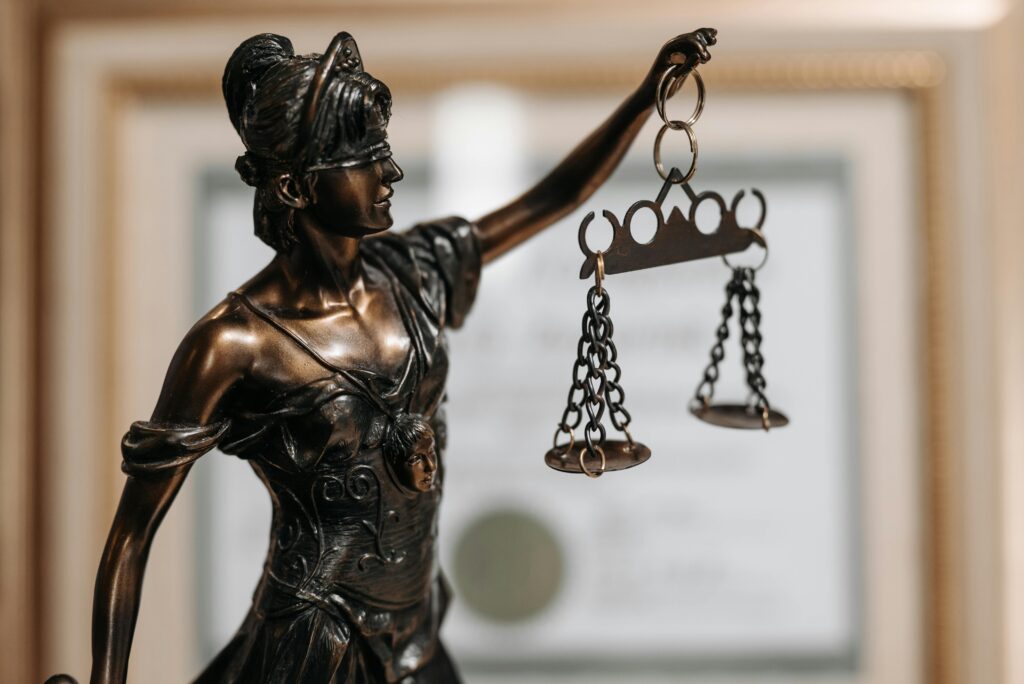Published On: September 21st 2025
Authored By: Eboh Victor Chidera
University of Lagos
“The Constitution of India is not a mere lawyer’s document, it is a vehicle of life, and its spirit is always the spirit of the age.”
— Justice D.Y. Chandrachud, Chief Justice of India
The Indian Constitution, a living document, embodies the values of liberty, equality, and justice in a pluralistic society. Over the decades, the Supreme Court of India has played a pivotal role in shaping and reshaping these values through its dynamic interpretation of fundamental rights. As India navigates the complexities of a 21st-century democracy, three issues stand at the heart of constitutional discourse: the expansive contours of the right to privacy post-Puttaswamy, the fine line between free speech and hate speech in a digital age, and the contentious debate surrounding the Uniform Civil Code (UCC). Each of these reflects the evolving tension between individual rights and collective governance, raising questions not only about legal interpretation but also about the nation’s commitment to inclusive constitutionalism.
This article explores three vital areas within Indian constitutional and human rights law: the transformation of the right to privacy following the landmark Puttaswamy decision, the complex balancing of free speech and hate speech in a pluralistic democracy, and the contentious debate around the Uniform Civil Code (UCC). Drawing upon key Supreme Court cases, legislative measures, and constitutional mandates, this work offers a comprehensive understanding of how these areas shape and challenge the Indian legal framework. It argues for a rights-based and inclusive approach to legal reform while emphasizing constitutional morality over political expediency.
Right to Privacy Post-Puttaswamy: Evolving Jurisprudence in India
- Judicial Recognition and Constitutional Embedding
“The task of constitutional interpretation in India has been to continually realign the Constitution’s moral compass with the demands of a changing society. Recognizing privacy as a fundamental right was a necessary constitutional evolution.”
— Gautam Bhatia, Constitutional Scholar, The Transformative Constitution (2019)
The Supreme Court’s ruling in Justice K.S. Puttaswamy (Retd.) v. Union of India marked a transformative moment in Indian constitutional law by declaring that the right to privacy is intrinsic to the right to life and personal liberty under Article 21, and also intersects with freedoms under Articles 14 and 19.¹ The nine-judge bench held that privacy is not an elitist construct but a core facet of dignity, autonomy, and freedom in a democratic polity. This ruling overruled earlier decisions such as M.P. Sharma v. Satish Chandra² and Kharak Singh v. State of U.P.,³ which had denied privacy the status of a fundamental right.
This doctrinal shift is deeply rooted in what Gautam Bhatia refers to as the “transformative” nature of the Indian Constitution.⁴ He argues that constitutional interpretation must be attuned to the lived realities of individuals and must evolve to meet contemporary challenges. Judicial recognition of privacy as a fundamental right thus reflects both the moral commitments of the Constitution and its adaptability to a digital and surveillance-intensive age.
The recognition of privacy as a fundamental right in India was a watershed moment in Indian constitutional jurisprudence. The Supreme Court in Justice K.S. Puttaswamy (Retd.) v. Union of India, (2017) 10 SCC 1, overturned decades of precedent that had previously denied such a right. The Court held that the right to privacy is implicit in the right to life and personal liberty under Article 21 and in the freedoms guaranteed under Part III of the Constitution. Importantly, the Court emphasized that privacy is intrinsic to human dignity and autonomy. This recognition aligns India with global human rights standards, including Article 17 of the International Covenant on Civil and Political Rights (ICCPR), to which India is a signatory.
- Dimensions and Tests for Restrictions
“The real test of a democracy lies not in the paper rights it grants, but in the proportional limits it places on power in pursuit of those rights.”
— Madhav Khosla, Legal Scholar, India’s Founding Moment: The Constitution of a Most Surprising Democracy (2020)
In adjudicating claims under Articles 14, 19, and 21, the Indian judiciary has developed structured tests to determine the constitutionality of restrictions on fundamental rights. The Puttaswamy decision reaffirmed that any restriction on privacy must satisfy the triple test: legality (existence of law), necessity (legitimate state aim), and proportionality (balancing the right and the restriction).¹ This test echoes earlier jurisprudence such as Modern Dental College and Research Centre v. State of Madhya Pradesh,² where the Supreme Court formally adopted the proportionality test from international human rights law.
Madhav Khosla rightly notes that “the real test of a democracy lies not in the paper rights it grants, but in the proportional limits it places on power.”³ The proportionality standard has become the cornerstone of constitutional review in India, used not only in privacy cases but also in matters involving free speech, preventive detention, and surveillance. In Anuradha Bhasin v. Union of India,⁴ the Court applied the same standard to assess restrictions on internet access, reaffirming that limitations must be narrowly tailored and based on concrete, reasonable grounds. The following cases elaborated on this topic
Justice K.S. Puttaswamy (Retd.) v. Union of India, (2017) 10 SCC 1.
Modern Dental College and Research Centre v. State of M.P., (2016) 7 SCC 353.
Madhav Khosla, India’s Founding Moment: The Constitution of a Most Surprising Democracy 187 (Harvard University Press 2020).
Anuradha Bhasin v. Union of India, (2020) 3 SCC 637.
The judgment elaborated on various aspects of privacy: bodily privacy (e.g., reproductive rights), decisional autonomy (e.g., sexual orientation, food preferences), and informational privacy (e.g., data protection). The Court adopted a three-pronged proportionality test to determine when the State may restrict privacy: (a) the existence of a law, (b) a legitimate state aim, and (c) proportionality between means and ends. This framework strengthens constitutional scrutiny of surveillance, data collection, and state action.
- Impact on Aadhaar and Surveillance Laws
“When the state collects data, it builds power. Without robust safeguards, that power can mutate into mass surveillance, deeply threatening individual autonomy.”
— Ujwala Uppaluri, Privacy Law Expert and Former Researcher, Centre for Policy Research
Following Puttaswamy, the Court in K.S. Puttaswamy (Aadhaar-5J.) v. Union of India (2019) upheld Aadhaar’s validity for welfare benefits but invalidated its use by private companies. It held that the Aadhaar Act failed the proportionality test in several areas. The judgment also raised concerns regarding the legal framework for surveillance. Existing laws, such as the Telegraph Act, 1885 and Section 69 of the Information Technology Act, 2000, have come under scrutiny for lack of transparency and oversight.
- Informational Privacy and Data Protection Law
“Informational privacy is not just about secrecy, but about autonomy—the power to control the terms on which personal data is shared, stored, and processed.”
— Justice B.N. Srikrishna, Chairperson, Committee on Data Protection, Government of India (2018)
The recognition of informational privacy laid the foundation for the enactment of the Digital Personal Data Protection Act, 2023. This law establishes rights for individuals over their data, mandates purpose limitation, and provides for regulatory oversight. However, critics argue that the Act contains several exemptions for government authorities, potentially diluting the spirit of Puttaswamy. Legal scholars and civil society organizations continue to advocate for stronger safeguards, transparency mechanisms, and accountability structures.
Freedom of Speech vs. Hate Speech: Legal Balance in Indian Democracy
“Freedom of speech is not a license to injure dignity; in a plural society, the legitimacy of free expression must coexist with the constitutional morality of equality and fraternity.”
— Dr. Faizan Mustafa, Constitutional Law Scholar and Former Vice-Chancellor, NALSAR University of Law
- Constitutional Context and Scope of Freedom
“The Indian Constitution protects speech not just as a liberty of individuals but as a means to sustain democratic discourse and challenge authority.”
— Gautam Bhatia, Constitutional Law Scholar, Author of Offend, Shock, or Disturb: Free Speech under the Indian Constitution
Freedom of speech and expression under Article 19(1)(a) is central to democratic governance. However, Article 19(2) permits the State to impose reasonable restrictions on grounds such as public order, decency, morality, and the sovereignty and integrity of India. The balancing of these two sub-articles lies at the heart of the Indian free speech debate. In Romesh Thappar v. State of Madras, AIR 1950 SC 124, the Court emphasized the essential role of free expression in democracy. Yet the scope of this right is increasingly tested by the proliferation of hate speech in political discourse and on social media.
- Legislative Measures Against Hate Speech
“India’s hate speech laws are overbroad, inconsistently enforced, and susceptible to political misuse—what we need is a narrowly tailored, speech-protective approach grounded in constitutional values.”
— Gautam Bhatia, Constitutional Lawyer and Author, Offend, Shock, or Disturb: Free Speech Under the Indian Constitution (2015)
Hate speech is not explicitly defined in Indian law, but provisions in the IPC—such as Sections 153A, 295A, and 505—criminalize speech that promotes enmity, incites violence, or outrages religious feelings. The lack of a clear statutory definition leads to uneven enforcement. The Law Commission of India in its 267th Report proposed new sections (153C and 505A) to define hate speech, but legislative action remains pending.
- Judicial Position and Interpretation
“The Indian Supreme Court has not merely interpreted the Constitution; it has crafted a dynamic moral compass for the nation through judicial innovation.”
— Prof. Upendra Baxi, Professor Emeritus, University of Warwick & former Vice-Chancellor, Delhi University
In Shreya Singhal v. Union of India, AIR 2015 SC 1523, the Supreme Court invalidated Section 66A of the IT Act, noting its vague terms and chilling effect on free speech. The Court drew a clear distinction between advocacy, discussion, and incitement—only the last category can be legitimately restricted. In Pravasi Bhalai Sangathan v. Union of India (2014), the Court noted that while hate speech laws exist, enforcement and public education are equally important. More recently, in Amish Devgan v. Union of India (2021), the Court reaffirmed the constitutional limitations on speech that incites communal violence.
- The Policy Challenge and Recommendations
“Constitutional rights must not only be safeguarded in courts, but translated into everyday governance—through robust institutions, thoughtful legislation, and a culture of accountability.”
— Prof. Gautam Bhatia, Constitutional Law Scholar and Author of Offend, Shock, or Disturb: Free Speech under the Indian Constitution
India faces a rising tide of speech that is communal, casteist, or misogynistic in nature. Legal reform must go hand-in-hand with judicial training, public sensitization, and independent regulation of media platforms. There is also a need to ensure that laws meant to curb hate speech are not weaponized to silence dissent or minority voices.
Uniform Civil Code: Constitutional Mandate or Political Agenda?
- Constitutional Basis and Directive Principle
Article 44 of the Constitution, part of the Directive Principles of State Policy, calls for a Uniform Civil Code (UCC) for all citizens. The rationale is to ensure equality and promote national integration. However, unlike fundamental rights, directive principles are non-justiciable. The Supreme Court in several cases has called for the implementation of UCC to address discrimination in personal laws, particularly regarding gender justice.
- Key Judicial Interventions
In Mohd. Ahmed Khan v. Shah Bano Begum, AIR 1985 SC 945, the Court upheld a Muslim woman’s right to maintenance under the secular CrPC, and recommended UCC implementation. Similarly, in Sarla Mudgal v. Union of India, AIR 1995 SC 1531, the Court criticized the misuse of religious conversion for polygamy and again called for a common civil code. The Court’s support, however, has not translated into legislative action due to political sensitivities.
- Goa Model and International Comparisons
Goa is often cited as a successful example of a UCC in India. The Portuguese Civil Code, retained after independence, applies uniformly to all religions. In Jose Paulo Coutinho v. State of Goa, (2019) 20 SCC 1, the Supreme Court praised Goa’s model. Comparatively, countries like France and Turkey have adopted secular civil codes with varying success. However, the Indian context of pluralism and constitutional protections under Article 25 (freedom of religion) presents unique challenges.
- Political Contestation and Minority Rights
The debate on UCC is highly politicized. While proponents argue it upholds equality under Article 14, opponents see it as a threat to minority autonomy and a majoritarian imposition. The All India Muslim Personal Law Board and Christian organizations have expressed concerns over the erosion of religious freedoms. The Law Commission’s 21st Report (2018) acknowledged the need for reform but rejected the feasibility of a uniform code at that stage, recommending gradual codification instead.
- Pathways to Reform
Reform must be participatory and sensitive to cultural diversity. Rather than imposing a single code, the government should consider codifying all personal laws to remove discriminatory provisions. Public consultations, education, and gender-sensitive reforms will pave the way for eventual uniformity. A consensus-based approach will fulfill the constitutional vision without compromising the rights of minorities.
Conclusion
India’s constitutional framework has been both transformative and contested. The evolution of privacy jurisprudence marks a shift toward greater individual autonomy and state accountability. The complex balance between freedom of speech and hate speech underscores the need for careful legislative drafting and principled enforcement. The Uniform Civil Code debate highlights the tension between constitutional uniformity and cultural pluralism. As India navigates its legal future, these issues demand not only judicial wisdom but also political will, social consensus, and constitutional morality. Only then can the promise of the Constitution be truly realized for all citizens.
Bibliography
- Justice K.S. Puttaswamy v. Union of India (2017) 10 SCC 1
- S. Puttaswamy (Aadhaar-5J.) v. Union of India (2019) 1 SCC 1
- Ahmed Khan v. Shah Bano Begum AIR 1985 SC 945
- Sarla Mudgal v. Union of India AIR 1995 SC 1531
- Jose Paulo Coutinho v. State of Goa (2019) 20 SCC 1
- Shreya Singhal v. Union of India AIR 2015 SC 1523
- Romesh Thappar v. State of Madras AIR 1950 SC 124
- Pravasi Bhalai Sangathan v. Union of India (2014) 11 SCC 477
- Amish Devgan v. Union of India (2021) SCC Online SC 940
- The Constitution of India: Articles 14, 19(1)(a), 19(2), 21, 25, 44
- Indian Penal Code: Sections 153A, 295A, 505
- Law Commission of India: 21st Report (2018), 267th Report (2017)
- Digital Personal Data Protection Act, 2023




